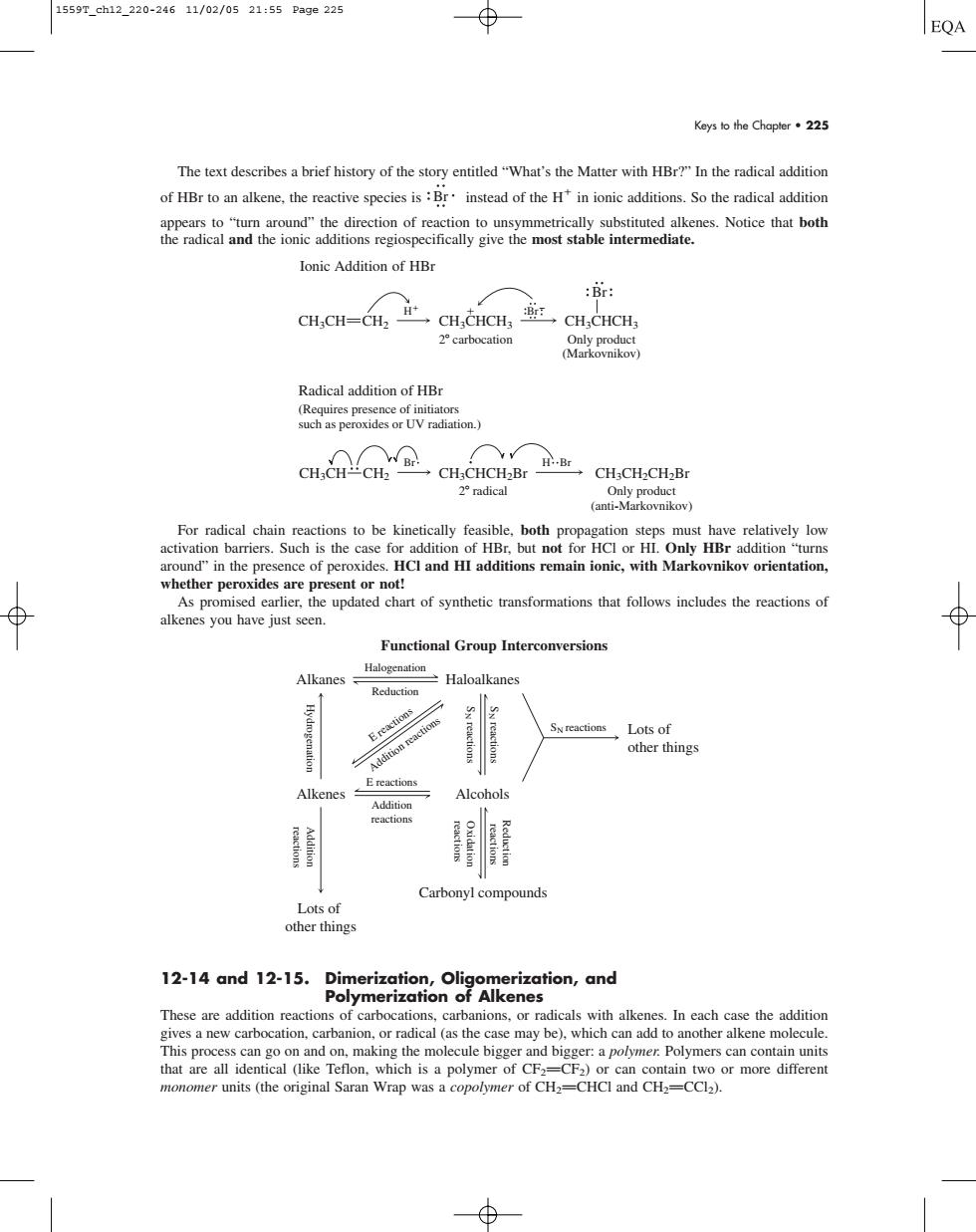正在加载图片...

1559Tch12220-24611/02/0521:55Pag0225 Keysto the Chapler·225 The text describes a brief history of the story entitled"What's the Matter with HBrIn the radical addition of HBr to an alkene,the reactive species is:Br instead of the Hin ionic additions.So the radical addition alkenes.Notice that both Tonic Addition of HB :Br: CHCH-cH CH;CHCH, ·CH,CHCH CH.CHCH. H.Br radica of synthetic transformations that follows includes the reactions of Functional Group Interconversions Alkanes Halogenation Haloalkanes Reduction Lots of other things Ereactions Alkenes Alcohols Carbonyl compounds Lots of other things 12-14and12-15. Dimeri ahorO5eamerteation,and These are addition reactions of carbocations,carbanions,or radicals with alkenes.In each case the addition thas pro or Ro恤 can go onKeys to the Chapter • 225 The text describes a brief history of the story entitled “What’s the Matter with HBr?” In the radical addition of HBr to an alkene, the reactive species is instead of the H in ionic additions. So the radical addition appears to “turn around” the direction of reaction to unsymmetrically substituted alkenes. Notice that both the radical and the ionic additions regiospecifically give the most stable intermediate. Ionic Addition of HBr For radical chain reactions to be kinetically feasible, both propagation steps must have relatively low activation barriers. Such is the case for addition of HBr, but not for HCl or HI. Only HBr addition “turns around” in the presence of peroxides. HCl and HI additions remain ionic, with Markovnikov orientation, whether peroxides are present or not! As promised earlier, the updated chart of synthetic transformations that follows includes the reactions of alkenes you have just seen. Functional Group Interconversions 12-14 and 12-15. Dimerization, Oligomerization, and Polymerization of Alkenes These are addition reactions of carbocations, carbanions, or radicals with alkenes. In each case the addition gives a new carbocation, carbanion, or radical (as the case may be), which can add to another alkene molecule. This process can go on and on, making the molecule bigger and bigger: a polymer. Polymers can contain units that are all identical (like Teflon, which is a polymer of CF2PCF2) or can contain two or more different monomer units (the original Saran Wrap was a copolymer of CH2PCHCl and CH2PCCl2). SN reactions Hydrogenation reactions Addition Halogenation Reduction E reactions Addition reactions E reactions Addition reactions SN reactions SN reactions Alkanes Haloalkanes Alkenes Alcohols Lots of other things Lots of other things Carbonyl compounds reactions Oxidation reactions Reduction Radical addition of HBr (Requires presence of initiators such as peroxides or UV radiation.) CH3CH CH3CHCH3 CH2 H 2 carbocation CH3CHCH3 Br Only product (Markovnikov) Br 2 radical CH3CH CH CH2 3CHCH2Br Br CH3CH2CH2Br Only product (anti-Markovnikov) H Br Br 1559T_ch12_220-246 11/02/05 21:55 Page 225